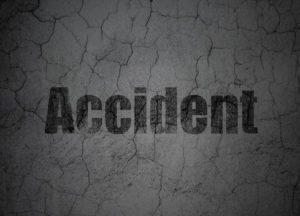Anatomy Of A Premises Liability Case
A fairly typical slip-and-fall case in South Florida, albeit one with a very atypical monetary damage amount, ended with a fairly typical result.
After she allegedly slipped and fell on an access ramp at a Lake Worth shopping center in 2007, a 61-year-old woman underwent five corrective surgeries to repair damage to her spine and nervous system, incurred over $670,000 in medical expenses, and expected to incur at least an additional $1 million during the remainder of her lifetime. In opening arguments, her attorney told jurors that the shopping center repainted the ramp and made it dangerously slick; he pointed out that shopping center management had the ramp re-sanded prior to the alleged fall, and “the only reason to bring them out for sand is it was slippery.” The shopping center’s attorney countered that the alleged victim had traversed the ramp “hundreds of times” without slipping or even complaining.
Shortly after opening statements, the case settled for an undisclosed amount.
Establishing Landowner Liability
In most all negligence cases, such as a car crash or a slip-and-fall, the plaintiff must establish that the defendant owed a legal duty of care. In most car crash cases, the defendant owes a duty of reasonable care to the plaintiff. To determine the duty in slip-and-fall and other premises liability cases, most courts use a classification system rooted in English common law:
- Invitee: Most victims are on the premises because of the owner’s express or implied permission, and the owner obtains either an actual or potential benefit from their presence. This benefit might be tangible or intangible. The landowner has the highest duty in these cases, which is to frequently inspect the premises and ensure that they are reasonably safe.
- Licensee: If the victim had express or implied permission to visit the location but conferred no benefit on the owner (g. the guest of an apartment tenant), the owner still has a duty to warn such guests of any latent defects that are not readily apparent to the naked eye.
- Trespasser: This pejorative term simply means someone who does not have permission to be on the land (g. a party crasher). Owners cannot intentionally harm these visitors, but have little or no duty beyond that, at least in most cases.
A few courts no longer use the classification system and instead apply a general duty of care that may vary slightly in different circumstances.
Nearly all premises liability victims are either social or business invitees. This label applies even if no money changes hands, because people like window-shoppers, third-party vendors, and job applicants are business invitees.
Proving Landowner Liability
To obtain compensation for damages, the plaintiff must prove that the owner knew, or should have known, about the dangerous condition or latent defect. Sometimes there is direct evidence on this point, like a work order to repair a burnt-out parking lot light or a “cleanup on Aisle Four” loudspeaker announcement. Plaintiffs can also use circumstantial evidence to prove knowledge. According to Anjou v. Boston Elevated Railway Company, the longer the defect existed, the more probable it is that the owner knew about the problem.
Partner with Aggressive Attorneys
In most cases, owners must take affirmative steps to make sure that their guests are safe. For a free consultation with an experienced personal injury lawyer in Port St. Lucie, contact Eighmie Law Firm, P.A. We have three area office locations.



